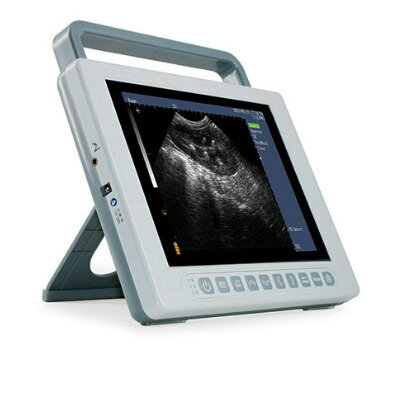New Imaging Method Superior for Diagnosing Multiple Types of Cancer
|
By MedImaging International staff writers Posted on 30 May 2023 |

Cancer-associated fibroblasts play a significant role in tumor development, migration, and progression. A subset of these fibroblasts expresses fibroblast activation protein (FAP), a protein prominently found in solid tumors but hardly present in healthy tissues. This makes FAP an appealing target for diagnosis and treatment using fibroblast activation protein inhibitors (FAPI). Now, two new studies have highlighted the potential of a novel FAPI radiotracer in the diagnosis, staging, and treatment of various types of cancer. The most comprehensive patient study of 68Ga-FAPI PET to date has demonstrated its superiority over the standard 18F-FDG PET in evaluating numerous cancers. Additionally, a newly developed FAPI-targeted treatment has demonstrated its ability to curb tumor growth in common cancers in preclinical trials. These advancements hold great promise for providing more accurate staging and management of cancer patients.
In the first study conducted by researchers at Essen University Hospital (Essen, Germany), 324 patients with 21 different types of tumors underwent 68Ga-FAPI PET over a span of three years; 237 of them also received 18F-FDG PET imaging. Researchers compared the uptake of 68Ga-FAPI PET and 18F-FDG PET across various tumors. They also looked for a potential correlation between 68Ga-FAPI uptake on PET scans and FAP expression in stained tissue samples. The uptake was significantly higher for 68Ga-FAPI compared to 18F-FDG in primary pancreatic cancer lesions and sarcoma, as well as in metastatic pancreatic cancer lesions. 68Ga-FAPI PET proved superior in detecting local, regional, and distant metastatic disease in various cancers, including sarcoma, pancreatic, head and neck, bile duct, lung, and bladder cancers. A positive correlation was also discovered between radiotracer uptake and FAP expression levels in tissue samples.
“68Ga-FAPI PET can be used as a tool for diagnosis of tumors, with the potential for more precise staging and management of patients with the aforementioned tumor entities,” said Nader Hirmas, MD, ScD, a PhD candidate at the Department of Nuclear Medicine at Essen University Hospital. “It could also be used as a tool to screen patients who would potentially benefit from FAP-directed radioligand therapy.”
In the second study, researchers at Purdue University (West Lafayette, IN, USA) developed a new FAP-targeted radiopharmaceutical therapy that targets naturally occurring cancer-associated fibroblasts. Using modern bioanalytical methods, they identified which cells in 34 human tumors of the breast, ovary, colon, and lung expressed FAP. They developed and tested two radiopharmaceutical conjugates, FAP6-DOTA and FAP6-IP-DOTA (the latter contains an albumin-binder for longer circulation and improved tumor uptake), on human cells expressing FAP. Additionally, radiopharmaceutical therapies of 177Lu-FAP6-DOTA and 177Lu-FAP6-IP-DOTA were evaluated in a mouse model. FAP was found to be over-expressed in 5% of human tumor cells, with cancer-associated fibroblasts making up 77% of this FAP-subpopulation and cancer cells constituting 2%. FAP6-IP-DOTA demonstrated high FAP affinity, extended circulation, increased tumor uptake, and minimal retention in healthy tissue. Additionally, single doses of 177Lu-FAP6-IP-DOTA curbed tumor growth by almost 50% in all tested tumor models without causing reproducible toxicities.
“These data suggest that this newly designed FAP-targeted radiotherapy should be capable of treating many more types of human cancers in which the FAP expression is limited to only the cancer-associated fibroblasts,” noted Spencer D. Lindeman, PhD, visiting scholar in the Department of Chemistry at Purdue University. “This could be a powerful and versatile tool for the field of clinical nuclear medicine.”
Related Links:
Essen University Hospital
Purdue University
Latest Nuclear Medicine News
- New SPECT/CT Technique Could Change Imaging Practices and Increase Patient Access
- New Radiotheranostic System Detects and Treats Ovarian Cancer Noninvasively
- AI System Automatically and Reliably Detects Cardiac Amyloidosis Using Scintigraphy Imaging
- Early 30-Minute Dynamic FDG-PET Acquisition Could Halve Lung Scan Times
- New Method for Triggering and Imaging Seizures to Help Guide Epilepsy Surgery
- Radioguided Surgery Accurately Detects and Removes Metastatic Lymph Nodes in Prostate Cancer Patients
- New PET Tracer Detects Inflammatory Arthritis Before Symptoms Appear
- Novel PET Tracer Enhances Lesion Detection in Medullary Thyroid Cancer
- Targeted Therapy Delivers Radiation Directly To Cells in Hard-To-Treat Cancers
- New PET Tracer Noninvasively Identifies Cancer Gene Mutation for More Precise Diagnosis
- Algorithm Predicts Prostate Cancer Recurrence in Patients Treated by Radiation Therapy
- Novel PET Imaging Tracer Noninvasively Identifies Cancer Gene Mutation for More Precise Diagnosis
- Ultrafast Laser Technology to Improve Cancer Treatment
- Low-Dose Radiation Therapy Demonstrates Potential for Treatment of Heart Failure
- New PET Radiotracer Aids Early, Noninvasive Detection of Inflammatory Bowel Disease
- Combining Amino Acid PET and MRI Imaging to Help Treat Aggressive Brain Tumors
Channels
Radiography
view channel
Novel Breast Imaging System Proves As Effective As Mammography
Breast cancer remains the most frequently diagnosed cancer among women. It is projected that one in eight women will be diagnosed with breast cancer during her lifetime, and one in 42 women who turn 50... Read more
AI Assistance Improves Breast-Cancer Screening by Reducing False Positives
Radiologists typically detect one case of cancer for every 200 mammograms reviewed. However, these evaluations often result in false positives, leading to unnecessary patient recalls for additional testing,... Read moreMRI
view channel
PET/MRI Improves Diagnostic Accuracy for Prostate Cancer Patients
The Prostate Imaging Reporting and Data System (PI-RADS) is a five-point scale to assess potential prostate cancer in MR images. PI-RADS category 3 which offers an unclear suggestion of clinically significant... Read more
Next Generation MR-Guided Focused Ultrasound Ushers In Future of Incisionless Neurosurgery
Essential tremor, often called familial, idiopathic, or benign tremor, leads to uncontrollable shaking that significantly affects a person’s life. When traditional medications do not alleviate symptoms,... Read more
Two-Part MRI Scan Detects Prostate Cancer More Quickly without Compromising Diagnostic Quality
Prostate cancer ranks as the most prevalent cancer among men. Over the last decade, the introduction of MRI scans has significantly transformed the diagnosis process, marking the most substantial advancement... Read moreUltrasound
view channel
Deep Learning Advances Super-Resolution Ultrasound Imaging
Ultrasound localization microscopy (ULM) is an advanced imaging technique that offers high-resolution visualization of microvascular structures. It employs microbubbles, FDA-approved contrast agents, injected... Read more
Novel Ultrasound-Launched Targeted Nanoparticle Eliminates Biofilm and Bacterial Infection
Biofilms, formed by bacteria aggregating into dense communities for protection against harsh environmental conditions, are a significant contributor to various infectious diseases. Biofilms frequently... Read moreGeneral/Advanced Imaging
view channel
New AI Method Captures Uncertainty in Medical Images
In the field of biomedicine, segmentation is the process of annotating pixels from an important structure in medical images, such as organs or cells. Artificial Intelligence (AI) models are utilized to... Read more.jpg)
CT Coronary Angiography Reduces Need for Invasive Tests to Diagnose Coronary Artery Disease
Coronary artery disease (CAD), one of the leading causes of death worldwide, involves the narrowing of coronary arteries due to atherosclerosis, resulting in insufficient blood flow to the heart muscle.... Read more
Novel Blood Test Could Reduce Need for PET Imaging of Patients with Alzheimer’s
Alzheimer's disease (AD), a condition marked by cognitive decline and the presence of beta-amyloid (Aβ) plaques and neurofibrillary tangles in the brain, poses diagnostic challenges. Amyloid positron emission... Read more.jpg)
CT-Based Deep Learning Algorithm Accurately Differentiates Benign From Malignant Vertebral Fractures
The rise in the aging population is expected to result in a corresponding increase in the prevalence of vertebral fractures which can cause back pain or neurologic compromise, leading to impaired function... Read moreImaging IT
view channel
New Google Cloud Medical Imaging Suite Makes Imaging Healthcare Data More Accessible
Medical imaging is a critical tool used to diagnose patients, and there are billions of medical images scanned globally each year. Imaging data accounts for about 90% of all healthcare data1 and, until... Read more
Global AI in Medical Diagnostics Market to Be Driven by Demand for Image Recognition in Radiology
The global artificial intelligence (AI) in medical diagnostics market is expanding with early disease detection being one of its key applications and image recognition becoming a compelling consumer proposition... Read moreIndustry News
view channel
Bayer and Google Partner on New AI Product for Radiologists
Medical imaging data comprises around 90% of all healthcare data, and it is a highly complex and rich clinical data modality and serves as a vital tool for diagnosing patients. Each year, billions of medical... Read more





















